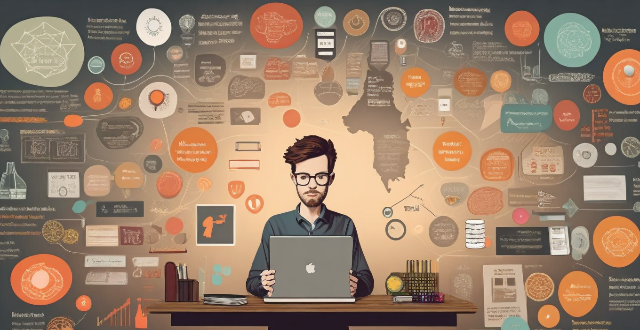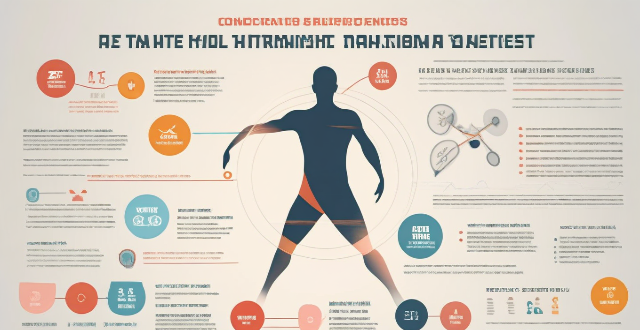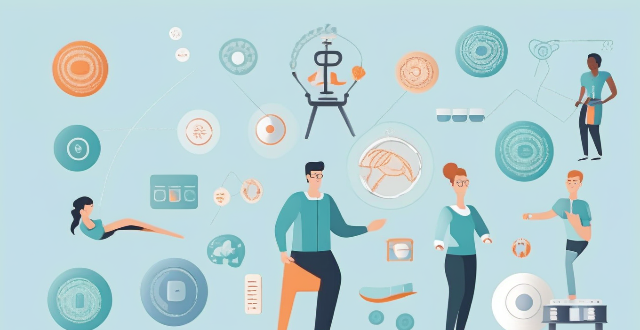Technology Analytics

To what extent do technological advancements (like improved equipment and analytics) influence sports performance at the highest level ?
Technology has significantly impacted sports performance through improved equipment, advanced analytics, and enhanced training methods. Lightweight materials, aerodynamic designs, and customized gear have boosted athlete performance. Safety measures and recovery tools have minimized injuries and accelerated healing. Smart devices and simulation tools aid efficient training. Advanced analytics aid in performance tracking, strategy development, and team management. However, these advancements may create disparities between teams with unequal access to technology. They also raise debates on skill versus technology's role in sports. Despite concerns, technology enhances fan engagement through interactive experiences and data visualization. As technology advances, governing bodies must ensure equitable access and maintain fair competition while embracing its role in shaping the future of sports.

What are the benefits of using data analytics in education ?
Data analytics has become an increasingly popular tool in education, offering benefits such as improved student performance through personalized learning and early intervention, enhanced teaching practices with curriculum development and professional development, and better decision making with evidence-based decision making and transparency. As technology advances, data analytics is likely to become an even more integral part of the educational landscape.

What are some common challenges faced by educators when implementing data analytics in their classrooms ?
Educators face several challenges when implementing data analytics in their classrooms, including a lack of training and support, limited access to technology and data, time constraints, resistance to change, and privacy and ethics concerns. These challenges can make it difficult for teachers to effectively integrate data analytics into their teaching practices, potentially limiting the benefits that data-driven strategies can offer for improving student outcomes.

How does data analytics improve team performance in sports ?
Data analytics has transformed sports by providing teams with valuable insights into player performance, training programs, game strategy, and predicting outcomes. By leveraging advanced technologies and statistical methods, coaches and players can make more informed decisions that lead to improved performance on the field or court. Key benefits of data analytics in sports include identifying key performance indicators (KPIs), optimizing training programs, enhancing game strategy, evaluating player performance, and predicting outcomes. Overall, data analytics is a powerful tool for teams looking to gain an edge over their competitors and achieve success in their sport.

What are some best practices for integrating data analytics into educational curriculum planning ?
Integrating data analytics into educational curriculum planning can significantly improve the quality of education by enabling educators to make data-driven decisions. Here are some best practices for incorporating data analytics into your curriculum planning process: 1. Establish clear objectives and identify key performance indicators (KPIs) that will help you measure success in achieving these objectives. 2. Collect relevant data from appropriate sources, such as student performance records, attendance rates, or feedback surveys, and ensure its accuracy and completeness. 3. Analyze the data using suitable tools like spreadsheet software, specialized data analysis programs, or machine learning algorithms, and interpret the results to identify patterns, trends, and areas for improvement in your curriculum planning. 4. Implement changes based on the analysis by developing action plans outlining how you will use the insights gained to modify your curriculum planning and monitor their progress over time. 5. Involve stakeholders like teachers, administrators, parents, and students in the process, keeping them informed about how data analytics is used to enhance educational experiences and outcomes. 6. Continuously evaluate and refine your approach by regularly reviewing new data and adapting to changes in educational needs and advancements in data analytics technology.

How can educational institutions use data analytics to improve student outcomes ?
Educational institutions can use data analytics to improve student outcomes by identifying areas of focus such as performance tracking, curriculum analysis, and student engagement. Implementing data-driven strategies like personalized learning, predictive analytics, and resource allocation can further enhance student success. Continuous evaluation and collaboration are key to measuring success and making necessary adjustments.

Can data analytics be used to personalize learning experiences for individual students ?
Data analytics is a powerful tool that can be used to personalize learning experiences for individual students by collecting data related to student performance, preferences and behaviors. This allows educators to tailor instruction to meet the unique needs of each learner. Data analytics can improve student outcomes, provide tailored instructional approaches, and use resources more efficiently. It can also identify student needs, design personalized learning plans and enhance teaching practices. By leveraging the power of data analytics, educators can better understand their students' needs, design effective learning plans, and enhance their teaching practices to promote improved outcomes for all learners.

What role does data analytics play in the development of sports equipment ?
Data analytics is crucial in the development of sports equipment. It helps manufacturers collect and analyze data from sensors, wearables, and performance tracking systems to gain insights into how athletes use their equipment. This information can be used for performance evaluation, athlete feedback, customization, injury prevention, and marketing and sales strategies. By leveraging data analytics, manufacturers can create more effective and efficient sports equipment that meets the needs of athletes and consumers alike.

What role do technology and data analytics play in improving disaster risk management strategies ?
This article explores how technology and data analytics can be used to improve disaster risk management strategies. It discusses the identification of potential hazards, assessment of vulnerabilities and capacities, monitoring and early warning systems, response coordination and information sharing, and recovery planning and implementation. The article emphasizes that technology and data analytics play a crucial role in enhancing preparedness, response, and recovery efforts, and predicting future disaster events based on historical data.

How do you use data analytics to improve your digital marketing efforts ?
In the digital age, data analytics has become an indispensable tool for improving marketing strategies. By analyzing consumer behavior and preferences, businesses can tailor their marketing efforts to better suit their target audience, ultimately leading to increased engagement and conversion rates. To improve your digital marketing efforts using data analytics, follow these steps: 1. Identify Key Performance Indicators (KPIs) based on your marketing objectives such as increasing website traffic or boosting sales. 2. Collect and analyze data using tools like Google Analytics and social media analytics platforms to identify trends and areas for improvement. 3. Optimize your marketing strategy by adjusting content, creating targeted campaigns, and refining ad spend based on performance. 4. Continuously test and refine your approach through A/B testing and iterating based on results to optimize performance. By integrating data analytics into your digital marketing efforts, you gain valuable insights that allow you to make informed decisions and optimizations. This systematic approach not only enhances the effectiveness of your marketing campaigns but also helps you stay ahead in a competitive market. Remember, the key is to continuously monitor, analyze, and adapt based on the data you collect.

How can data analytics help identify areas where students may need additional support ?
Data analytics is a crucial tool in education as it helps identify areas where students may need additional support. It involves collecting and analyzing large sets of data to inform decision-making processes. Data analytics can be used to analyze student performance, track progress over time, and analyze behavior. Once areas for additional support are identified, personalized learning plans can be developed, collaboration between stakeholders can be facilitated, and continuous monitoring and adjustment can take place. Overall, data analytics provides valuable insights into student needs and promotes academic growth and success.

What role does data privacy play in the use of data analytics in education ?
Data privacy is a crucial aspect of educational data analytics, ensuring the protection of student information, compliance with legal frameworks, and building trust among stakeholders. It encompasses measures such as maintaining confidentiality, integrity, and availability of data, adhering to regulations like FERPA, and obtaining explicit permission from students and parents. Challenges include potential misuse of data, bias, and discrimination. Best practices involve developing clear policies, implementing technical measures like encryption and access controls, and educating staff and students about their rights. By addressing these challenges and implementing best practices, educational institutions can harness the power of data analytics while safeguarding the privacy rights of their students.

How can technology be used to promote vaccine equity ?
Technology can promote vaccine equity by improving accessibility, monitoring, and distribution. Digital awareness campaigns, telemedicine services, real-time data tracking, data analytics, automated logistics systems, and cold chain management are some of the ways technology can be used to achieve this goal. By leveraging technology, we can bridge the gap between the haves and the have-nots, making vaccines accessible to all sections of society.

What is sports technology analysis ?
Sports technology analysis is a process of using advanced technologies to collect, analyze, and interpret data related to sports performance. The goal of sports technology analysis is to improve athletic performance, enhance coaching effectiveness, and optimize team management. Key areas of sports technology analysis include biomechanics, physiology, video analysis, wearable technology, and data analytics. By utilizing these tools and techniques, coaches can gain valuable insights into athletes' physical abilities, training methods, equipment usage, and game strategies. This leads to better overall performance and increased success in competitions. Sports technology analysis also enhances coaching effectiveness by providing coaches with detailed information about athletes' strengths and weaknesses, allowing them to develop more effective training programs that target specific areas for improvement. Additionally, sports technology analysis helps optimize team management by monitoring players' workloads and fitness levels through wearable technology and other tracking systems. Overall, sports technology analysis is a powerful tool that allows coaches to make more informed decisions about player development, game strategies, and team management.

How can technology be used to monitor and predict climate conflicts ?
Climate conflicts, exacerbated by competition for natural resources, have significant impacts. Technology is crucial in monitoring and predicting these conflicts through satellite imagery, data analytics, GIS, social media monitoring, mobile technology, and collaboration platforms. These tools help in early warning, predictive modeling, mapping disputes, sentiment analysis, citizen reporting, information dissemination, and multi-sector coordination.

How can technology be used to enhance the development of a knowledge framework ?
The text discusses the various ways in which technology enhances knowledge framework development. It mentions that technology provides access to information, enables interactive learning, fosters collaboration and networking, offers customization and personalization, provides data analytics and assessment, automates routine tasks, and supports lifelong learning. The text concludes by emphasizing the importance of integrating technology into educational systems while also maintaining a balance with traditional teaching methods.

How has technology improved food safety monitoring and compliance ?
This article discusses how technology has played a crucial role in enhancing food safety measures. It covers traceability systems, sensor technology, data analytics, automation and machine learning, and blockchain technology. Traceability systems allow for the tracking of products from farm to table using barcodes, QR codes, and RFID tags. Sensors monitor various parameters that impact food safety, such as temperature, humidity, and chemical composition. Data analytics tools process vast amounts of collected data to identify patterns, trends, and potential risks. Automated systems reduce human error and increase efficiency in food processing plants, while machine learning algorithms enhance decision-making processes based on learned behaviors from past data. Blockchain offers a decentralized way to record transactions securely and transparently when applied to food supply chains. By leveraging these technological advancements, we can work towards a future where food safety concerns are minimized, benefiting both consumers and industry stakeholders alike.

Can technology help improve food security in a changing climate ?
In the face of climate change, technology offers numerous solutions to enhance food production and distribution, contributing to global food security. Key areas where technology can make a significant impact include precision farming, genetic engineering, data analytics, water management, digital infrastructure, supply chain optimization, urban agriculture, and policy support. By leveraging these technological advancements, we can mitigate the adverse effects of climate change on agriculture and ensure a stable and sustainable food system for all.

How has sports technology analysis evolved over time ?
The evolution of sports technology analysis has transformed the way we understand and improve athletic performance. From manual methods to advanced analytics, wearable technology, and artificial intelligence, coaches and analysts now have access to more accurate and comprehensive data than ever before. This has allowed for more informed decision-making and optimized training programs, ultimately leading to better overall performance in sports.

How has the use of wearable technology impacted sports data analysis ?
Wearable technology has revolutionized sports data analysis by enabling real-time performance monitoring, injury prevention, training optimization, and strategic decision-making. Athletes can receive immediate feedback on their performance metrics, while coaches can tailor training loads and develop game plans based on accurate data. Wearables also aid in injury prevention and recovery tracking. Fan engagement is enhanced through interactive experiences and broadcast enhancements. Future developments include advanced analytics and integration with other technologies. Overall, wearable technology has significantly transformed sports data analysis for the betterment of athletes' health, performance, and team strategies.

How has technology changed the way we experience sports ?
Technology has revolutionized the way we experience sports, from enhanced viewing experiences to instant access to information, improved training and performance, and increased fan engagement and interaction. High-definition broadcasts, multi-angle replays, and interactive platforms have made watching sports more immersive. Live score updates and in-depth analysis provide fans with real-time information. Advanced analytics and wearable technology help teams and athletes optimize training and performance. Virtual reality and social media create a sense of community and foster discussions beyond the traditional boundaries of the stadium. Overall, technology continues to shape the future of sports in exciting new ways.

How can technology help in designing and monitoring a sports training plan ?
Technology has revolutionized sports training, allowingTechnology has revolutionized sports training, allowing workout programs through wearable devices allowing for more personalized and efficient workout programs through wearable devices, data analytics, and virtual training environments. It aids in designing training plans by collecting performance data, tracking movement patterns, simulating game scenarios, and customizing regimens based on individual needs. Technology also enhances monitoring progress with real-time feedback, recovery management tools, and adaptive goal setting features. These advancements provide valuable insights that traditional methods cannot match, shaping the way athletes reach their peak performance.

What role does technology play in modern teacher training initiatives ?
Technology plays a significant role in modern teacher training initiatives. It provides teachers with new tools and resources that can help them become more effective educators. Online learning platforms, simulation and virtual reality, data analytics, collaboration tools, digital literacy, personalized learning, access to global resources, and feedback and assessment are some ways technology is used in teacher training.

How has wearable technology influenced the development of sports equipment ?
Wearable technology has revolutionized sports by providing athletes with innovative tools to enhance their performance and monitor their health. This includes improved performance tracking through real-time data collection and advanced analytics, enhanced safety and injury prevention through impact monitoring and recovery monitoring, personalization and customization of training programs and equipment, connectivity and social interaction through virtual training partners and social media integration. These advancements have led to better overall performance, faster improvement rates, increased safety, and a sense of community among athletes.

What are the latest trends and advancements in climate data analysis technology ?
Latest Trends and Advancements in Climate Data Analysis Technology Climate data analysis has become increasingly important in recent years as scientists work to understand the impact of climate change on our planet. With advancements in technology, new methods for analyzing this data have emerged, leading to a better understanding of the complexities of the climate system. Here are some of the latest trends and advancements in climate data analysis technology: Artificial Intelligence and Machine Learning: One of the most significant developments in climate data analysis is the use of artificial intelligence (AI) and machine learning (ML). These technologies can process vast amounts of data quickly and accurately, allowing researchers to identify patterns and trends that would be difficult or impossible to detect manually. For example, AI and ML algorithms can analyze satellite images to track changes in ice coverage or monitor deforestation rates. Big Data Analytics: The volume of climate data available today is enormous, and big data analytics tools are essential for managing and interpreting this information. These tools can help researchers identify correlations between different variables, such as temperature changes and extreme weather events. They can also be used to create predictive models that forecast future climate conditions based on current trends. Cloud Computing and Remote Sensing: Cloud computing has made it possible for researchers to access and share large datasets from anywhere in the world. This has led to increased collaboration among scientists working on climate-related projects. Remote sensing technologies, such as drones and satellites, are also being used more frequently to collect climate data. These tools can provide real-time information about changes in the environment, allowing researchers to respond quickly to emerging issues. Blockchain Technology: Blockchain technology is another promising development in climate data analysis. By using a distributed ledger system, blockchain can ensure that climate data is secure, transparent, and immutable. This means that once data is recorded on the blockchain, it cannot be altered or deleted, ensuring its integrity over time. Additionally, blockchain can facilitate the sharing of climate data across organizations and countries without compromising security or privacy concerns. Citizen Science and Crowdsourcing: Citizen science and crowdsourcing initiatives have become increasingly popular ways to gather climate data. These programs involve members of the public in collecting and contributing data about their local environments. By harnessing the power of crowdsourcing, researchers can gather vast amounts of data from diverse locations around the world, providing valuable insights into global climate patterns and trends.

What are some innovative ways that technology is being used in sports ?
Technology has significantly transformed various aspects of sports, including training methods, fan engagement, and game strategies. Key areas where technology is making a notable impact include virtual and augmented reality for both training and enhancing the fan experience, wearable technology for performance tracking and injury prevention, advanced analytics in player performance analysis and game strategy, video technology like instant replay and drone cameras for improved officiating and viewing experiences, eSports and gaming for interactive experiences and training simulations, social media and digital engagement for athlete interaction and live streaming, artificial intelligence in generating match highlights and aiding injury rehabilitation, and the Internet of Things in creating smart stadiums and monitoring equipment maintenance. These advancements not only improve performance but also enrich the overall sports experience for everyone involved.

How does technology impact credit management practices ?
Technology has revolutionized credit management practices by automating processes, enhancing data analysis capabilities, and streamlining communication channels. Automated credit scoring systems save time and reduce human error, while accounts receivable management software helps businesses track outstanding invoices and initiate collections actions if necessary. Technology also enables businesses to monitor changes in a borrower's creditworthiness in real-time, allowing them to make informed decisions about extending credit or adjusting terms. Enhanced data analysis tools like artificial intelligence and machine learning help businesses gain insights into customer behavior and make better-informed decisions about extending credit. Predictive analytics can identify potential risks, sentiment analysis gauges customer sentiment towards products or services, and fraud detection technology reduces the risk of financial losses due to credit card fraud or identity theft. Streamlined communication channels such as online portals, mobile apps, and chatbots powered by AI improve customer service and efficiency in credit management practices. Overall, technology has had a profound impact on credit management practices and will continue to do so as it evolves.

What role does technology play in modern education systems ?
The text discusses the role of technology in modern education systems, highlighting its ability to enhance accessibility, personalize learning experiences, improve collaboration and communication, refine assessment methods, and facilitate lifelong learning. It also acknowledges potential challenges such as the digital divide, overreliance on technology, and data privacy concerns. The conclusion emphasizes that while technology offers numerous opportunities for education enhancement, it should be integrated thoughtfully to avoid potential pitfalls.

In what ways have advancements in technology facilitated the globalization of sports ?
Globalization of Sports through Technological Advancements Introduction: - Technology has played a crucial role in making sports a universal language, connecting fans and athletes across the globe, and enhancing the overall experience of sporting events. 1. Improved Communication and Connectivity: - Fans can access information about their favorite sports and teams instantly through smartphones, tablets, and laptops. - Social media platforms have revolutionized the way fans interact with each other and their favorite athletes. 2. Advanced Broadcasting Technology: - Live streaming services and high-definition television broadcasts provide an immersive viewing experience for millions of people worldwide. - Virtual reality (VR) and augmented reality (AR) technologies are transforming the way fans experience sports. 3. Enhanced Training Methods: - Data analytics tools enable coaches and trainers to track an athlete's performance metrics and create personalized training programs. - Virtual reality training simulations offer athletes a safe and controlled environment to practice and refine their skills without the risk of injury. 4. Increased Accessibility and Inclusivity: - Technology has played a crucial role in making sports more accessible and inclusive for people with disabilities through advancements in wheelchair design and materials. - The rise of online gaming and esports has created new opportunities for people to participate in competitive activities regardless of their physical abilities or location. Conclusion: - Advancements in technology have transformed the way we experience and participate in sports, making it a global phenomenon that unites people through shared interests and passions.

How can Smart Grid Technology help in managing renewable energy sources ?
Smart grid technology is crucial for managing renewable energy sources, enabling their integration into the existing power system and improving efficiency, reliability, and sustainability. It achieves this by optimizing energy consumption, managing demand response, predicting maintenance, self-healing capabilities, integrating energy storage, developing microgrids, real-time monitoring, and data analytics. As renewable energy grows in importance, smart grid technology will become increasingly vital in integrating these sources into our power systems.